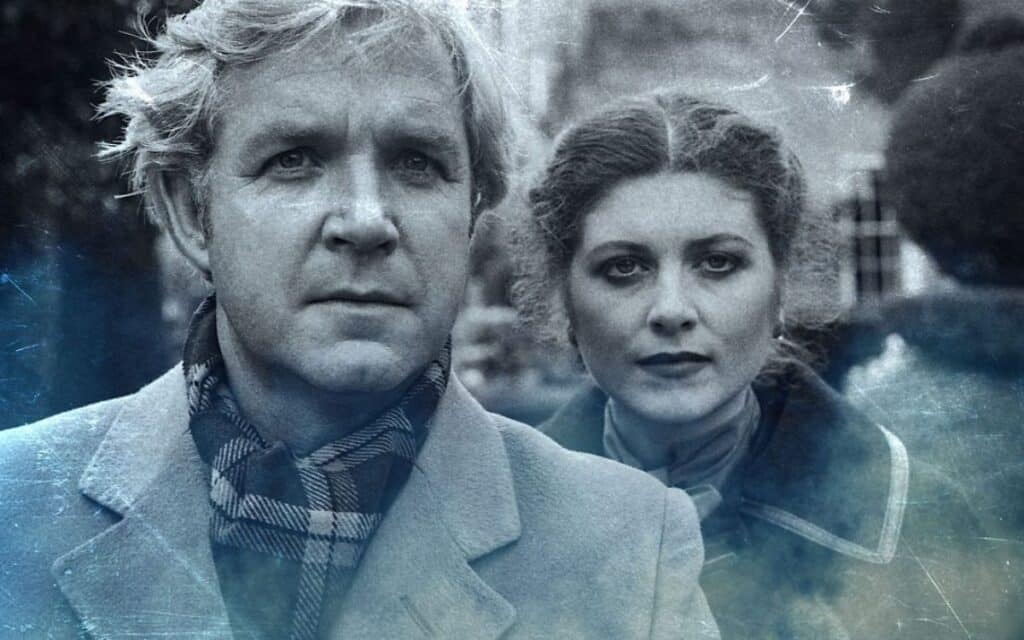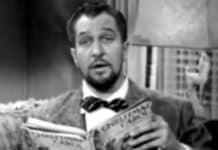The Ice House 1978 was a anaemic conclusion to the classic A Ghost Story for Christmas series, says RICHARD MARKWORTH

The Ice House 1978 was the final offering in the BBC’s original 1970s run of their A Ghost Story for Christmas series and a dramatic departure from the familiar, period-set, tales of vengeful ghosts and the dire consequences of prying into ancient secrets derived from the works of M R James.
Whilst not the first film in the strand to eschew James as source material, or indeed to have a contemporary setting, the Ice House seems somehow detached from the main series and possesses a unique feel of its own. This is due in part to being the only entry not helmed by Lawrence Gordon Clark, with Derek Lister taking on directorial duties.
The story, written by John Griffith Bowen, concerns Paul (John Stride) a middle-aged professional who has recently split from his wife. We first meet him in a sauna, packed with men of a similar age, at an exclusive health resort run by a pair of sinister siblings, Clovis (Geoffrey Burridge) and Jessica (Elizabeth Romilly), where he has retreated to recuperate from the breakup.
Paul, under the ministrations of young masseur, Bob (David Beames), is startled by the coldness of the latter’s hands. Bob, a relatively new addition to the staff, explains he has “a touch of the cools” a condition most of the permanent staff are prone to despite the general warmth of the house.
As if this isn’t strange enough, Paul’s fellow guests seem a decidedly odd bunch. There are no young people amongst their number and the elderly group appear somewhat subdued and uncommunicative. One old lady barely converses and is noticeably disturbed by the flames in the fireplace, the sight of which causes her to whimper in distress.
Events take an even weirder turn when a nervous Bob begs Paul to help him leave the establishment during one of their sessions. However, before he can elaborate, Clovis arrives and takes over Paul’s massage himself.
Later that night Paul, apparently not the most astute of fellows, hears a scream which he puts down to “country noises”. The next day, strolling through the grounds with Clovis, he is told Bob has gone away. If any pennies drop for Paul at this point, there is no indication of it.
Strange as the guests appear, they are relatively normal compared to the creepy Clovis and seductive Jessica who provide their new guest with a queasiness-inducing level of attention.
The pair assure Paul they want what is best for him. They introduce him to the titular ice house on the grounds of the spa and an unclassified exotic vine growing upon it which has borne two flowers whose colourings reflect those of the outfits worn by the siblings, with Jessica favouring scarlet hues and Clovis predominately clothed in white.
Paul finds the scent of the vine almost overpowering and smells its heady perfume pervading his room that night as, unbeknownst to him, the incestuous couple kiss passionately beneath the flowers.
Unsurprisingly, Paul develops a sense of unease at his surroundings, unnerved by sudden chills and the presence of the mysterious ice house itself which, contrary to his own experience, is supposedly never locked.
Despite being constantly informed, “there is only ice in the ice house” Paul, intoxicated by the scent of the vine, is compelled to investigate the building only to find himself rocked by what he discovers within before finally learning the siblings motivation for running their isolated establishment in the story’s climax.
It is doubtful The Ice House 1974 will provide a satisfying watch for anyone who prefers their entertainment spoon-fed to them with a large helping of logic and many questions remain
unanswered. For instance, we never learn exactly who or what the brother and sister are or their relation to the flowers on the vine. Are they themselves offshoots of the plant or do they have a psychic connection to it?
Likewise, the reason for Paul’s marital breakdown is not revealed, although his penchant for being massaged by young men presents a rather glaring clue. The tale has a strong gay subtext throughout with its theme of forbidden love, as represented by the siblings, and the mysterious appearance of distinctly phallic-shaped holes in Paul’s windowpane. The attraction of an isolated community where pleasure is provided to aging guests away from the “chapel people” of the village hints at lives having been led unfulfilled in the “real” world.
However, as an allegory for repressed sexuality, I believe this story would have been far better served if based in a period when homosexual relations were still unlawful in this country as opposed to such a modern setting.
This episode is unlikely to appeal to fans of the classic ghost story, especially those of the earlier James adaptations. Although a supernatural undercurrent is present in the tale and a creepy atmosphere prevails, it is questionable as to whether this can be considered a genuine ghost story and bears little relation to previous entries in the series.
The only sequence that feels compatible with the earlier offerings is provided when Paul explores the darkened ice house, his only light provided by burning a letter from his wife. Here, Lister creates a tense, shadowy scene reminiscent of Michael Bryant’s search of the culvert in The Treasure of Abbot Thomas 1974.
The Ice House is an interesting film, imbued with a fairy-tale quality, and improves on repeated viewing. The cinematography is admirable and Romilly is perfectly cast as the simultaneously attractive and repellent Jessica, bringing an almost hypnotic presence to her role.
Ultimately however, this film would perhaps have been more suited to ITV’s Tales of the Unexpected rather than A Ghost Story for Christmas and sadly proves a somewhat anaemic conclusion to the classic 1970s series.
Tell us your thoughts on The Ice House 1978 in the comments below!
RICHARD MARKWORTH and Ian J Walls have co-written a new comedy-horror book called Igor and the Twisted Tales of Castlemaine, available from Amazon or the Troubadour website. It follows eponymous lab assistant, Igor, after he leaves Victor Frankenstein and finds himself embroiled in a series of misadventures featuring both classic and all new monsters.







